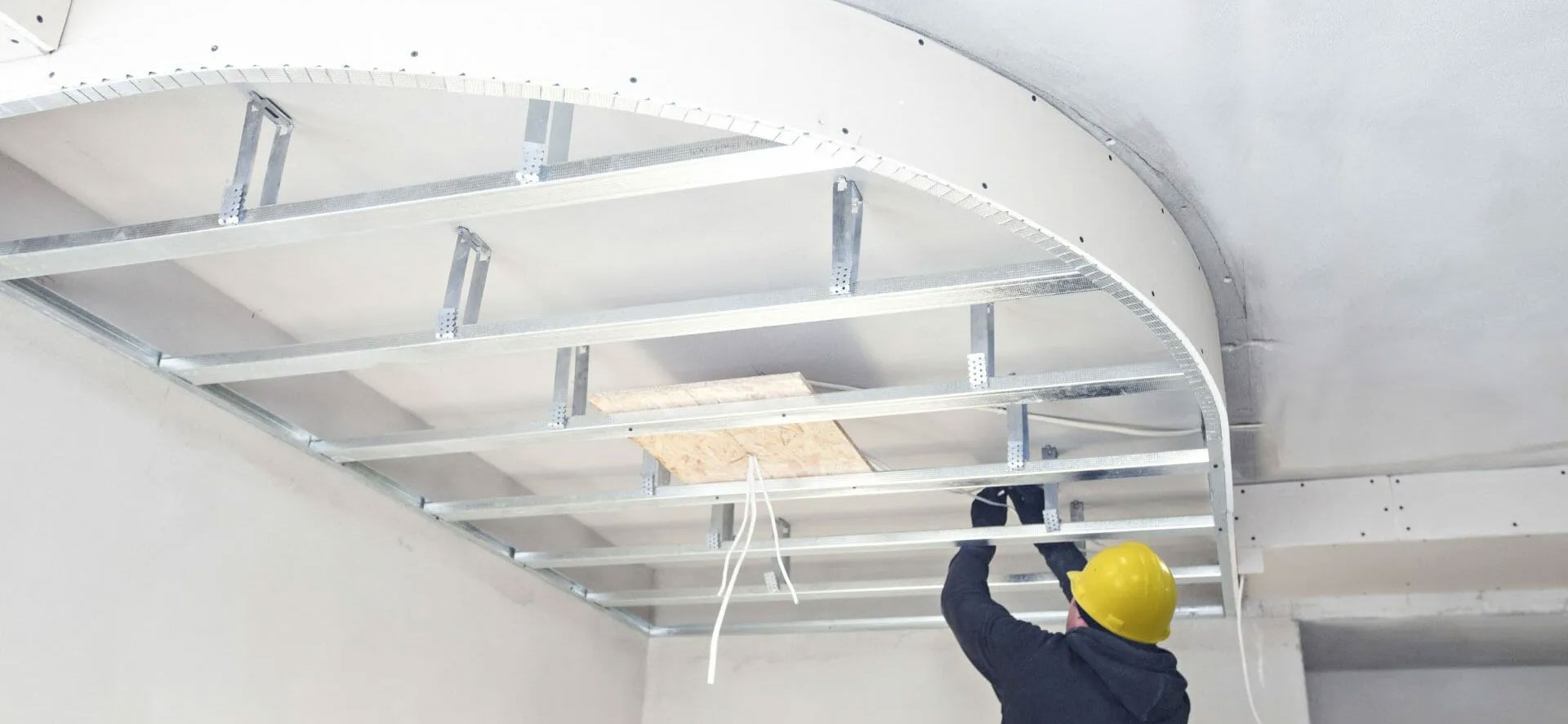Because of their versatility, aesthetic appeal, and ease of installation, gypsum board ceilings have become a popular choice in modern construction. This essay will delve into the art of gypsum board ceiling installation, looking at the materials, techniques, and benefits of this innovative construction method. Gypsum board is the primary material used in the installation of gypsum board ceilings. It is made up of gypsum, a naturally occurring mineral, core sandwiched between layers of paper. Gypsum boards come in a variety of thicknesses and sizes to meet a variety of architectural needs.
Installation Methods:
Gypsum board ceiling installation is a methodical process that necessitates skilled craftsmanship. Here are some key techniques used in the art of installing gypsum board ceilings:
1. Measurement and Layout:
Accurate measurements and layout planning are crucial to achieve a well-aligned and symmetrical ceiling. This stage involves determining the dimensions of the room, locating light fixtures, and marking the position of the gypsum boards.
2. Framing:
The next step involves constructing a framework to support the gypsum boards. Typically, metal studs or wooden frames are installed along the perimeter of the ceiling, creating a grid-like structure. This framework provides stability and ensures the secure attachment of the gypsum boards.
3. Cutting and Fitting:
Gypsum boards are cut to size using a utility knife or a specialized drywall saw. Care must be taken to achieve clean and precise cuts. The boards are then fitted onto the framework, ensuring a tight and seamless fit. Special attention is given to corners and edges, where additional techniques like mitering or beveling may be employed for a professional finish.
4. Taping and Jointing:
Once the gypsum boards are in place, the joints and screw heads are covered with joint compound or ‘mud.’ This compound is applied using a taping knife, followed by the embedding of joint tape to reinforce the joints. Multiple layers of compound are applied and sanded down to create a smooth and seamless surface.
Benefits of Gypsum Board Ceiling Installation:
The art of gypsum board ceiling installation comes with a range of benefits, making it a preferred choice for builders and homeowners alike:
1. Aesthetic Appeal:
Gypsum board ceilings offer a clean, modern look that can enhance the overall aesthetic of a room. They provide a smooth and uniform surface that can be easily painted or adorned with decorative finishes, giving homeowners the freedom to personalize their living spaces.
2. Versatility:
Gypsum board ceilings allow for the integration of various design elements, such as recessed lighting, air vents, and access panels. They can be easily modified or expanded to accommodate changes in architectural plans or future renovations.
3. Cutting and Fitting:
Gypsum boards are cut to size with a utility knife or a plasterboard saw. To achieve clean and precise cuts, care must be taken. The boards are then fitted to the framework to ensure a snug and seamless fit. Corners and edges are given special attention, and additional techniques such as mitering or beveling may be used for a professional finish.
4. Taping and Jointing:
After the gypsum boards have been installed, the joints and screw heads are covered with joint compound, also known as ‘mud.’ This compound is applied with a taping knife, and then joint tape is embedded to reinforce the joints. To achieve a smooth and seamless surface, multiple layers of compound are applied and sanded down.
To create visually appealing and functional spaces, the art of gypsum board ceiling installation combines precision, craftsmanship, and creativity. The systematic techniques used in measuring, framing, cutting, and finishing contribute to the success of gypsum board ceiling installation. Gypsum board ceilings have become a popular choice in modern construction due to their aesthetic appeal, versatility, fire resistance, and sound insulation properties, revolutionizing the way we design and build our living and working spaces.
While the techniques and materials used in gypsum board ceiling installation are critical, there are other factors that contribute to the installation’s success and longevity. This essay will investigate these additional factors that are important in achieving long-term success:
1. Moisture Resistance:
Moisture can be a major threat to gypsum board ceilings, especially in areas prone to high humidity or water exposure. Moisture-resistant gypsum boards are available to address this concern. These boards have a special formulation that includes additives to improve moisture resistance and prevent mould and mildew growth. To ensure the longevity and performance of the ceiling installation, it is critical to assess the environmental conditions and select the appropriate type of gypsum board.
2. Proper Ventilation:
Proper ventilation is critical for gypsum board ceiling installations, particularly in areas such as kitchens and bathrooms.
